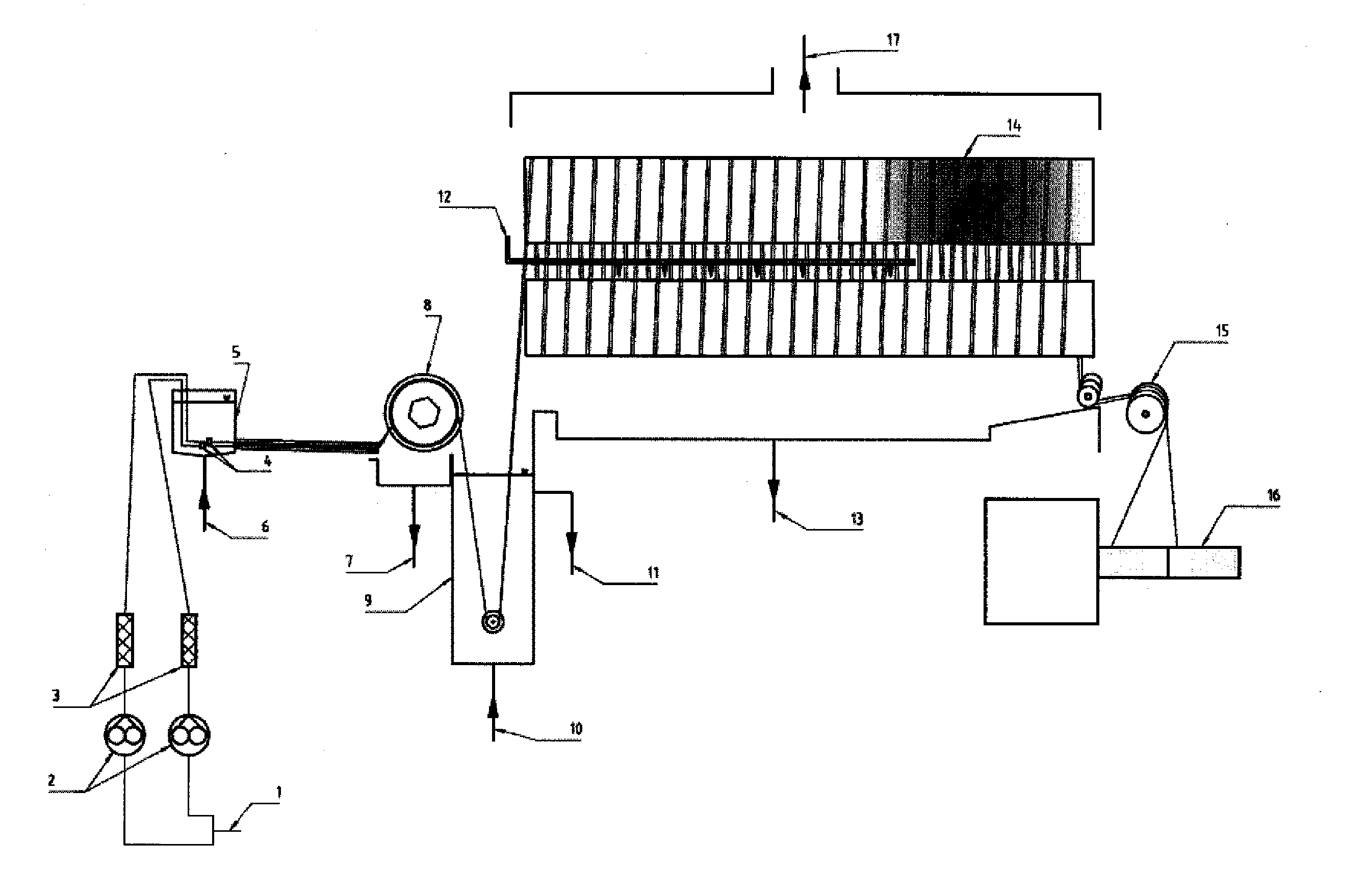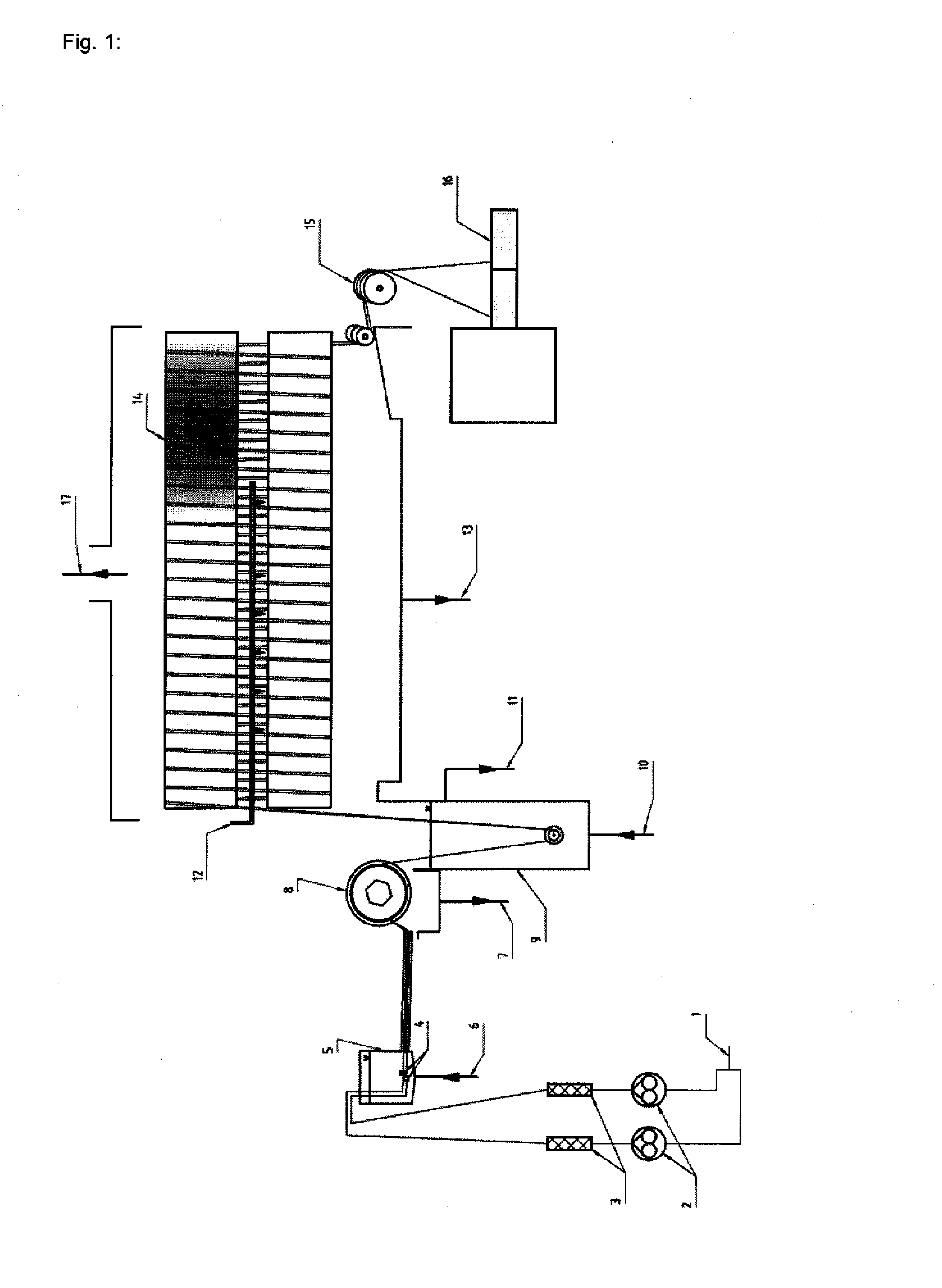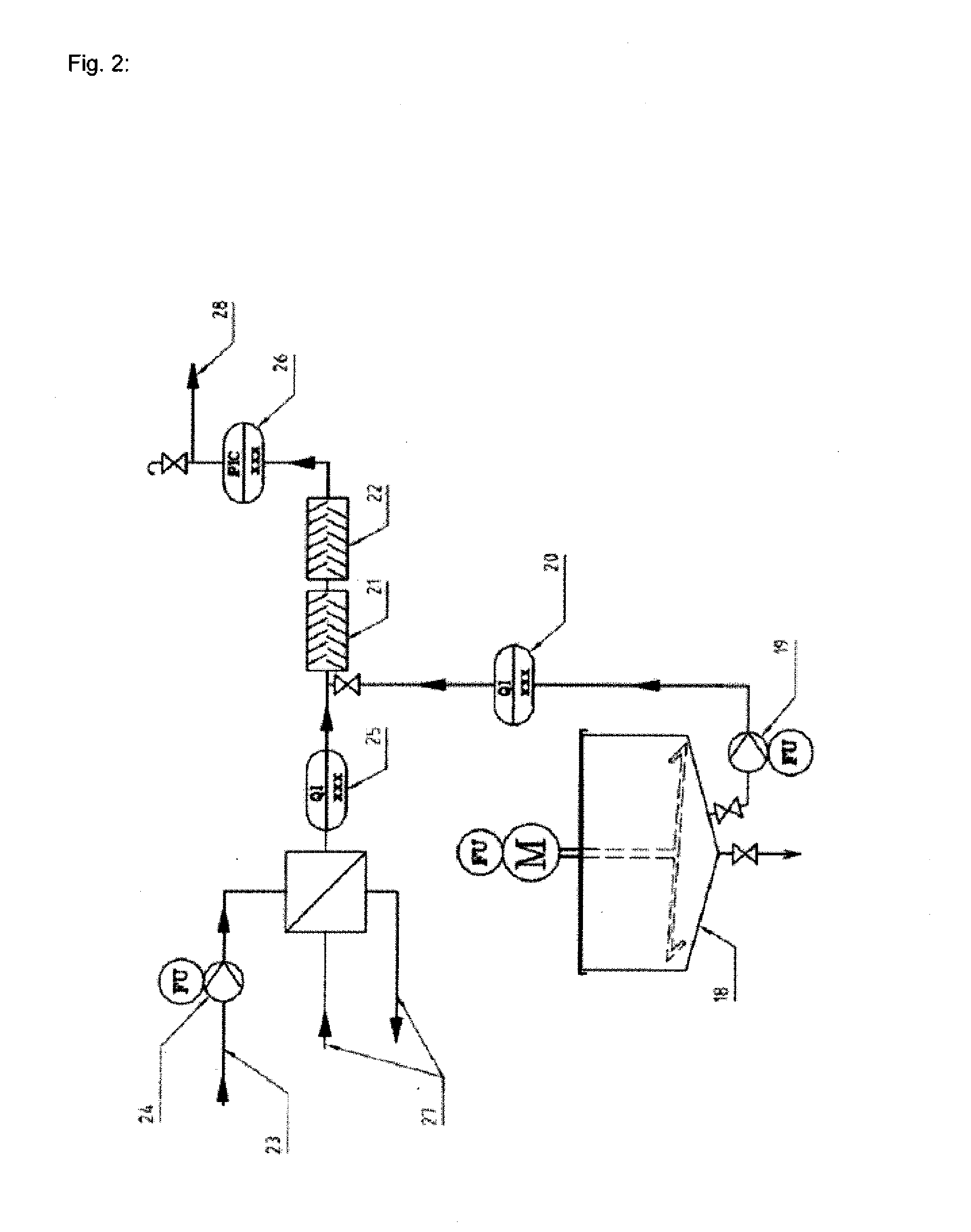High strength cellulosic filament its use, and method for the production thereof
- Summary
- Abstract
- Description
- Claims
- Application Information
AI Technical Summary
Benefits of technology
Problems solved by technology
Method used
Image
Examples
Embodiment Construction
[0082]6 parts by weight of 2,2′-oxybis[5,5-dimethyl-1,3,2-dioxaphosphoriane]2,2′disulfide, 6 parts by weight of water, and 0.55 parts by weight of alkyl polyglycol ether phosphoric acid ester are homogenized using a dissolver and ground in an agitator bead mill (Drain, type Perl Mill PML-V / H) with zirconium oxide grinding beads at a temperature of 40-55° C. until the finished dispersion has an x992, related to cellulose. The viscose was filtered 4 times and vented. 1 hour prior to spinning, 3% (related to cellulose) of ethoxylated amine, a modifier causing a sheath structure, was added to the viscose. The viscose was post-ripened to a spinning gamma value of 57. The viscosity during spinning was 80 falling ball seconds. The finished flame retardant dispersion is added to this ready-to-spin viscose.
[0083]The spinnerets used have a spinneret hole diameter of 60 μm. The precipitation bath contains 75 g / 1 of sulfuric acid, 113 g / 1 of sodium sulfate, and 53 g / 1 of zinc sulfate. The preci...
PUM
| Property | Measurement | Unit |
|---|---|---|
| Temperature | aaaaa | aaaaa |
| Temperature | aaaaa | aaaaa |
| Fraction | aaaaa | aaaaa |
Abstract
Description
Claims
Application Information
 Login to View More
Login to View More - R&D
- Intellectual Property
- Life Sciences
- Materials
- Tech Scout
- Unparalleled Data Quality
- Higher Quality Content
- 60% Fewer Hallucinations
Browse by: Latest US Patents, China's latest patents, Technical Efficacy Thesaurus, Application Domain, Technology Topic, Popular Technical Reports.
© 2025 PatSnap. All rights reserved.Legal|Privacy policy|Modern Slavery Act Transparency Statement|Sitemap|About US| Contact US: help@patsnap.com



